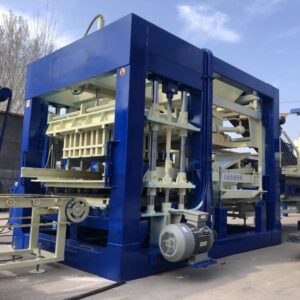
In an era characterized by increasing environmental consciousness and the urgent need for sustainable development, the construction industry is embracing innovative solutions to minimize its ecological footprint. Among these solutions, the advent of green building practices stands as a beacon of hope, offering a path towards more sustainable and eco-friendly construction.
At the heart of this movement are innovative block making machines that have redefined the way we build, by incorporating environmentally friendly materials, optimizing resource usage, and reducing waste.
This essay delves into the remarkable synergy between green building principles and modern block making machines, exploring their environmental benefits, design implications, challenges, and the transformative role they play in shaping the future of construction.
Green Building Principles and Environmental Benefits
Resource Efficiency: One of the fundamental tenets of green building is resource efficiency, and modern block making machines align seamlessly with this principle.
These machines utilize advanced technologies to precisely measure and mix materials, resulting in minimal wastage.
By optimizing material usage, green block production contributes to the preservation of finite resources.
Energy Efficiency: Green building emphasizes energy-efficient construction practices to reduce the demand for non-renewable energy sources.
Modern block making machines incorporate energy-efficient curing methods, such as steam or vibration, that accelerate the curing process while minimizing energy consumption.
This reduces the carbon footprint of block production and aligns with global efforts to combat climate change.
Reduced Carbon Emissions: Traditional brick manufacturing processes often involve the burning of fossil fuels, leading to substantial carbon emissions.
Green block making machines address this issue by using alternative materials like fly ash or incorporating recycled aggregates.
These environmentally friendly materials not only reduce carbon emissions but also divert waste from landfills.
Design Implications and Aesthetic Possibilities
Green block making machines offer architects and builders a canvas for creativity. With the ability to create customized molds and dies, these machines enable the production of blocks with intricate designs, textures, and interlocking features.
This versatility promotes sustainable design practices by allowing architects to incorporate shading, ventilation, and passive cooling strategies into the building’s aesthetics.
The thermal properties of blocks produced by green block making machines contribute to the overall energy efficiency of a structure.
These blocks can be designed to have higher thermal insulation, reducing the need for artificial heating or cooling and ultimately lowering energy consumption.
Natural Ventilation and Daylighting: The design of green blocks can incorporate features that enhance natural ventilation and daylight penetration.
By strategically placing voids or perforations in the blocks, architects can facilitate the flow of fresh air and natural light, reducing the reliance on mechanical systems and artificial lighting.
Challenges and Implementation Hurdles
While the use of alternative and recycled materials is a hallmark of green block production, the availability of these materials can be a challenge in some regions.
Establishing a consistent supply chain for these materials is crucial for the widespread adoption of green block making machines.
Operating and maintaining green block making machines may require specialized technical knowledge.
Training personnel to effectively manage the equipment and ensure proper material ratios is essential for successful implementation.
Market Acceptance and Perception: The construction industry can be resistant to change, and the adoption of green building practices, including green block making machines, may face skepticism or reluctance. Educating stakeholders about the environmental and economic benefits of these machines is essential for fostering market acceptance.
Shaping the Future of Eco-Friendly Construction
Collaboration and Innovation: The synergy between green building principles and modern block making machines underscores the importance of collaboration and innovation in driving sustainable construction practices.
Architects, engineers, manufacturers, and policymakers must work together to harness the full potential of these technologies.
Regulatory Support: Governments and regulatory bodies play a vital role in shaping the direction of the construction industry.
By incentivizing the adoption of green building practices and setting standards for eco-friendly construction materials, they can create an environment conducive to sustainable innovation.
Education and Awareness: Raising awareness among construction professionals and the general public about the benefits of green block making machines is essential for fostering a mindset shift towards more sustainable construction practices.
Educational initiatives, workshops, and awareness campaigns can play a pivotal role in promoting these technologies.
In conclusion, the marriage of green building principles and innovative block making machines holds immense promise for the construction industry and the planet as a whole.
By incorporating resource-efficient and energy-efficient practices, these machines are paving the path to eco-friendly construction.
Through reduced material wastage, minimized carbon emissions, and creative design possibilities, green block making machines embody the ethos of sustainable development.
While challenges exist, they are opportunities for collaborative problem-solving and industry-wide transformation.
As we journey towards a more sustainable future, green block making machines stand as a testament to human ingenuity and the enduring commitment to building a better world.
